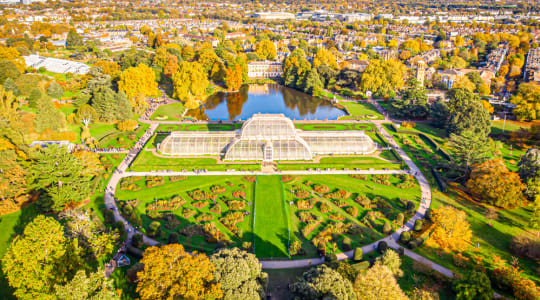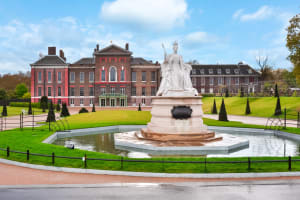
The Royal Botanic Gardens Kew, commonly known as Kew Gardens, is a UNESCO World Heritage Site located in southwest London. The gardens were first established in 1759 and are one of the world's largest collections of living plants, with over 50,000 different species, including rare and endangered plants.
The gardens cover over 300 acres and include a range of gardens, glasshouses, and other buildings. The most famous feature is the Palm House, which is a large Victorian glasshouse designed to house tropical plants from around the world. Other notable attractions include the Princess of Wales Conservatory, the Waterlily House, the Japanese Landscape, and the Temperate House, which is the largest surviving Victorian glasshouse in the world.
Kew Gardens also houses the world-renowned Millennium Seed Bank, which is working to preserve and conserve the world's plant species. In addition to its botanical collections, Kew Gardens also hosts a range of events and activities throughout the year, including exhibitions, concerts, and festivals.
Kew Gardens is not only a major tourist attraction but also a center for botanical research and education. The gardens are home to several scientific departments, including the Jodrell Laboratory, which conducts research into plant diversity and evolution. Kew Gardens is also the headquarters of the International Union for Conservation of Nature, a global organization dedicated to the conservation of nature and biodiversity.
Explore Near Royal botanic gardens Kew
Discover 5 attractions, 5 cities, and 3 airports within 75km. Perfect for planning day trips, finding connecting flights, or discovering new destinations to explore during your visit.
Nearby Attractions & Places to Visit
5 destinations within 7.2km - 8.5km from your location





Nearby Cities Worth Exploring
5 destinations within 3.6km - 6.7km from your location
Airports Near Royal botanic gardens Kew
3 destinations within 11.6km - 37.4km from your location
Cross-Border Adventures Near Royal botanic gardens Kew
Discover cross-border adventures near Royal botanic gardens Kew. Explore neighboring countries with similar attractions and extend your travel experience across borders.
